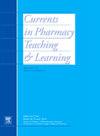Exploring the integration of behaviour change training in Australian pharmacy education: A curriculum review
IF 1.4
Q3 EDUCATION, SCIENTIFIC DISCIPLINES
引用次数: 0
Abstract
Background
Pharmacists are essential in primary healthcare and are uniquely positioned to promote preventative health through behaviour change interventions. Effective delivery of these interventions requires theoretical and practical training in behaviour change strategies and techniques. The aim of the study was to (1) examine the current integration of behaviour change training in the Australian Pharmacy curricula, and (2) identify key factors contributing to its inclusion in the course.
Methods
A comprehensive qualitative approach was used to conduct a curriculum review across accredited Australian pharmacy courses. This involved a document analysis of unit outlines, triangulated with semi-structured interviews with pharmacy staff to explore perceptions and experiences of behaviour change training.
Results
Eleven accredited Australian pharmacy courses (6 undergraduate, 5 postgraduate), including 148-unit outlines, were analysed using summative content analysis. Behaviour change training focused on communication, counselling, clinical reasoning, and patient-centred skills. Semi-structured interviews (N = 10) showed five themes: “It's not clearly defined,” “Focus on ‘industry ready skills’,” “It's experience driven, “They're just expected to apply it”, and “Behaviour change is embedded.” Key factors included limited time, resources, incentives, knowledge gaps, and competing priorities.
Conclusions
Behaviour change training is integrated throughout the curriculum, however there are inconsistencies in the breadth and depth across universities. The findings highlight the need for clear and structured integration of behaviour change in learning outcomes and targeted assessments to develop students' behaviour change skills. Future curriculum development should focus on creating frameworks to equip educators to support student's competencies and confidence as they transition into practice.
探索澳大利亚药学教育中行为改变培训的整合:课程回顾
背景药剂师在初级卫生保健中至关重要,在通过行为改变干预措施促进预防性健康方面具有独特的地位。有效实施这些干预措施需要在行为改变战略和技术方面进行理论和实践培训。该研究的目的是(1)检查澳大利亚药学课程中行为改变培训的当前整合情况,(2)确定有助于将其纳入课程的关键因素。方法采用全面的定性方法对经过认证的澳大利亚药学课程进行课程审查。这包括对单位大纲的文件分析,以及与药房员工进行的半结构化访谈,以探索对行为改变培训的看法和经验。结果采用总结性内容分析法对6门经认可的澳大利亚药学课程(6门本科课程,5门研究生课程)的148个单元大纲进行分析。行为改变培训侧重于沟通、咨询、临床推理和以病人为中心的技能。半结构化访谈(N = 10)显示了五个主题:“没有明确定义”、“专注于‘行业所需技能’”、“经验驱动”、“他们只是希望应用它”和“行为改变是嵌入的”。关键因素包括有限的时间、资源、激励、知识差距和竞争优先级。行为改变训练贯穿整个课程,但各大学在广度和深度上存在不一致。研究结果强调,需要将行为改变清晰、有组织地整合到学习成果和有针对性的评估中,以培养学生的行为改变技能。未来的课程开发应侧重于创建框架,使教育工作者能够在学生向实践过渡时支持他们的能力和信心。
本文章由计算机程序翻译,如有差异,请以英文原文为准。
求助全文
约1分钟内获得全文
求助全文
来源期刊

Currents in Pharmacy Teaching and Learning
EDUCATION, SCIENTIFIC DISCIPLINES-
CiteScore
2.10
自引率
16.70%
发文量
192
 求助内容:
求助内容: 应助结果提醒方式:
应助结果提醒方式:


